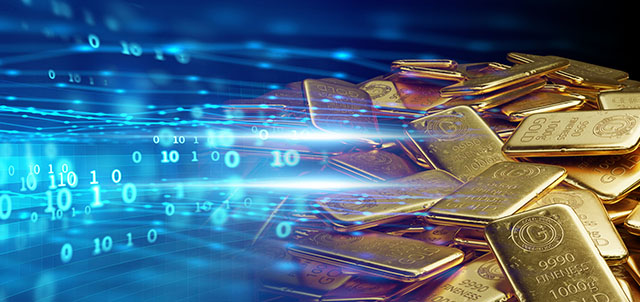Beyond the Bullion: Navigating the Dynamics of Precious Metals Trading
Engaging in trading precious metals is a complex yet intriguing venture that has been steadily gaining prevalence among investors seeking to diversify their portfolios. The market dynamics surrounding these luxurious commodities, which primarily consist of gold, silver, platinum, and palladium, are influenced by many factors. These factors include geopolitical events and economic indicators, supply and demand dynamics, central bank policies, currency fluctuations, and investor sentiment.
Navigating this intricate web of influences is crucial for those looking to capitalize on the potential opportunities and mitigate risks in the precious metals market. By staying informed on these ever-evolving dynamics, investors can position themselves strategically to make informed decisions and potentially reap the rewards of trading these alluring assets.
Understanding Precious Metals Trading
At the core of precious metals trading is understanding their inherent value. Unlike other commodities, precious metals do not perish or degrade over time, making them a safe and durable store of value. This characteristic makes them attractive to investors during economic uncertainty, and their value tends to rise in such periods.
However, this also means that the price of precious metals can be highly volatile, making it essential for investors to understand the market dynamics and apply adequate risk management strategies.
New traders can visit https://goldirablueprint.com/best-ways-to-invest-in-gold/ to learn more about the investment options available in precious metals trading, including physical ownership or indirect exposure through ETFs.
Factors that Influence Precious Metals Price
Here are some of the primary factors that can influence precious metals prices:
Geopolitical Events and Economic Indicators
Political instability, trade tensions, and conflicts can significantly impact the global economy, causing fluctuations in precious metals prices. For instance, investors flock to safe-haven assets such as gold and silver during heightened geopolitical tension or economic downturns.
Economic indicators such as inflation, interest rates, and GDP growth can also affect precious metals prices. Higher inflation or lower interest rates tend to increase the demand for precious metals. At the same time, more robust economic growth may lead to a rise in industrial demand for metals like platinum and palladium.
Supply and Demand Dynamics

The supply of precious metals is relatively limited compared to other commodities, making them more susceptible to supply shocks. Any mining, refining, or transportation disruptions can decrease supply and increase prices.
On the demand side, precious metals have various uses, such as jewelry production, industrial applications, and investment purposes. Changes in demand for these different purposes can also affect prices.
Central Bank Policies
Central banks play a significant role in influencing precious metals prices through their monetary policies. For example, when central banks increase interest rates, investors may prefer to hold cash instead of non-yielding assets such as gold and silver, decreasing demand and prices.
On the other hand, during periods of economic uncertainty, central banks may adopt accommodative policies that could support precious metals prices due to increased demand from investors seeking a hedge against market volatility.
Currency Fluctuations
Since precious metals are priced in US dollars, any fluctuations in the currency can have an impact on their prices. A stronger dollar tends to make precious metals more expensive for buyers in other currencies, potentially decreasing demand and prices.
Conversely, a weaker dollar can increase demand for precious metals as investors seek to protect their wealth against currency devaluation.
Investor Sentiment
As with any market, investor sentiment is crucial in determining precious metals prices. Positive or negative news, rumors, or speculations can significantly influence these commodities’ demand and costs.
Since precious metals are often seen as a hedge against economic turmoil, any changes in overall market sentiment can also impact their prices.
Navigating the Dynamics
With so many factors, navigating the precious metals market can seem daunting. However, don’t fret! Investors can employ several precious metal trading strategies to stay informed and make well-informed decisions in this complex market.
First and foremost, staying current with current events and economic indicators is crucial. Keep a close eye on global news, geopolitical developments, and financial data potentially impacting precious metals prices. Doing so lets you gain valuable insights and anticipate potential market movements.
It is essential to follow the market trends and analyze historical data. By studying past patterns and price movements, you can identify trading opportunities and make informed investment decisions. Utilize various analytical tools and charts to understand market dynamics better and identify possible entry or exit points.
Diversifying your portfolio is critical. Consider investing in different precious metals instead of putting all your eggs in one basket. Gold, silver, platinum, and palladium have unique characteristics and may respond differently to market conditions. By diversifying, you can mitigate risks and optimize your portfolio performance.
Consider using risk management trading tools such as stop-loss orders. Volatility is inherent in the precious metals market, and protecting your investments from potential downside risks is essential. Setting up stop-loss orders will limit losses by setting off a sell order if the price reaches a predetermined level.
While navigating the precious metals market may seem overwhelming, adopting these strategies and staying informed can empower you to make more confident investment decisions. Happy investing!
The Last Word
Navigating the dynamics of precious metals trading requires a keen understanding of market influences, risk management strategies, and staying informed. Metal investors can capitalize on potential opportunities in this exciting but volatile market by closely monitoring geopolitical events, economic indicators, and other trading factors affecting the market. Precious metals can be valuable to any investment portfolio with careful analysis and risk management.
